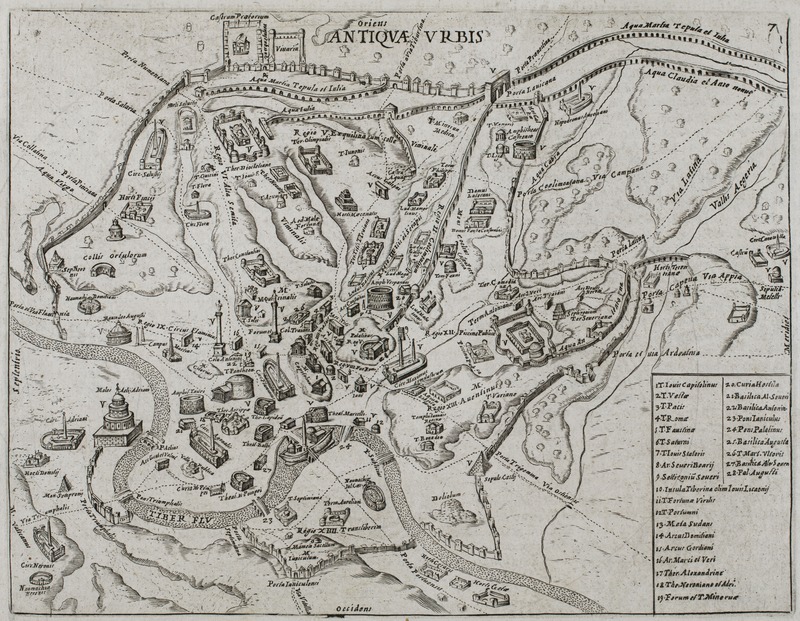Location

Giacomo Lauro's 17th century depiction of ancient Rome, from Splendore dell'antica e moderna Roma. (Rome, 1641), Special Collections, Wellesley College.
The Temple of Jupiter was built on the southern peak of the Capitoline Hill, the smallest of the Seven Hills of Rome.1 Facing southeast across the Tiber Valley, it was a visible landmark for travelers approaching Rome, and could be seen from the Roman Forum, Tiber River, and Campus Martius.2 Historically speaking, the Capitoline Hill was a sacred site for other divinities even before the Temple of Jupiter.3 From a very early period, the Capitoline Hill was a site of important historical events critical to the founding of Rome and a center for Roman religious activity.4 The Capitoline Hill is the legendary location of the Hut of Romulus, and Romulus’ asylum for foreign refugees. The visibility, centrality, and resonance of its location helped make the Temple of Jupiter a cultural icon of Rome for centuries to come.
Locate the Temple of Jupiter on the interactive map of ancient Rome.
1 John W. Stamper, The Architecture of Roman Temples (Cambridge: Cambridge University Press, 2005), 6.
2 John W. Stamper, The Architecture of Roman Temples (Cambridge: Cambridge University Press, 2005), 6.
3 L. Richardson, jr., A New Topographical Dictionary of Ancient Rome (Baltimore: the Johns Hopkins University Press, 1992), 222.
4 Amanda Claridge, Rome: An Oxford Archaeological Guide (Oxford: Oxford University Press, 2010), 259-261.